
driver manual mn in spanish
Welcome to the Minnesota Driver Manual in Spanish․ This guide provides essential information for Spanish-speaking drivers to understand Minnesota driving laws and safe driving practices․
1․1 Overview of the Minnesota Driver Manual in Spanish
The Minnesota Driver Manual in Spanish is a comprehensive guide designed to help Spanish-speaking residents understand the state’s driving laws, road rules, and safe driving practices․ It covers essential topics such as traffic signs, speed limits, right-of-way rules, and defensive driving techniques․ The manual also includes information about the licensing process, eligibility requirements, and what to expect during the road test․
Additionally, it provides tips for new drivers, resources for studying, and a glossary of important driving terms in both English and Spanish․ This manual is a valuable tool for anyone seeking to obtain a driver’s license in Minnesota, ensuring they are well-prepared and informed to drive safely and responsibly․
1․2 Importance of Understanding the Manual
Understanding the Minnesota Driver Manual in Spanish is crucial for safe and responsible driving․ It ensures compliance with state laws and promotes road safety by explaining traffic rules, signs, and best practices․
By studying the manual, drivers can gain confidence behind the wheel, reduce the risk of accidents, and avoid legal penalties․ It also serves as a key resource for Spanish-speaking residents, helping them navigate the licensing process and understand their responsibilities as drivers․
A thorough understanding of the manual empowers drivers to make informed decisions and contribute to a safer driving environment for everyone on Minnesota roads․
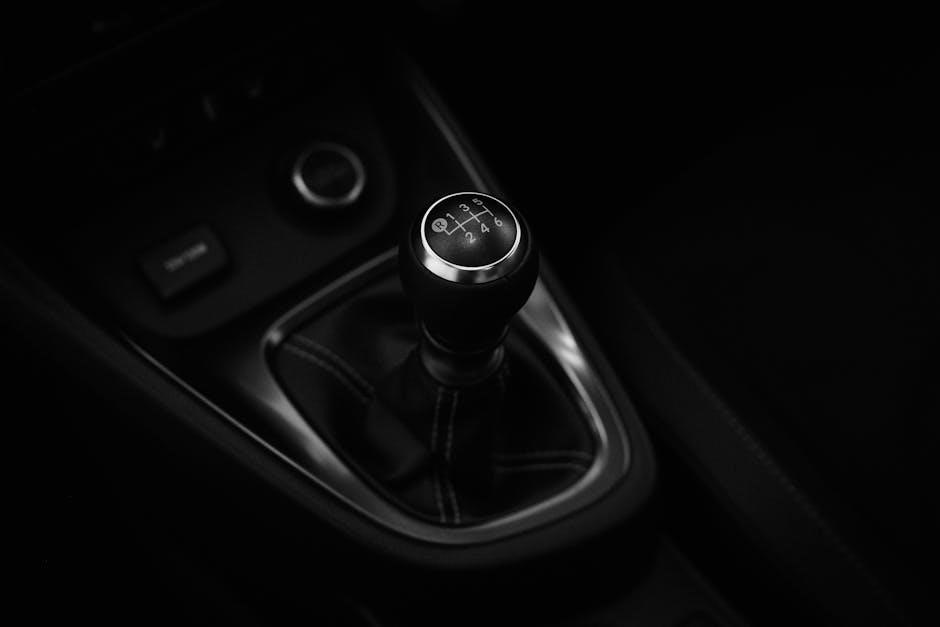
Licensing Process in Minnesota
The licensing process in Minnesota involves several steps, including eligibility verification, document submission, and testing․ This section outlines the requirements and procedures to obtain a driver’s license in the state․
2․1 Eligibility Requirements for a Driver’s License
To apply for a driver’s license in Minnesota, you must meet specific eligibility criteria․ Age requirements vary by license type: 15 years old for a learner’s permit, 16 for a provisional license, and 18 for a full unrestricted license․ Applicants must be Minnesota residents and pass a vision test․ For minors under 18, parental or guardian consent is required․ Documentary proof of identity, residency, and legal status must be provided․ Applicants with medical conditions that could impact driving may need additional evaluations․ These requirements ensure that only qualified individuals operate vehicles, promoting road safety for all drivers․ Meeting these criteria is essential for advancing through the licensing process․
2․2 Required Documents for Application
To apply for a driver’s license in Minnesota, you must provide specific documents to verify your identity, residency, and legal status․ Proof of identity includes a valid passport, birth certificate, or permanent resident card․ Proof of Social Security number can be a Social Security card or W-2 form․ Proof of residency requires two documents, such as utility bills, bank statements, or rental agreements․ Minors under 18 must also provide parental consent via a notarized form․ These documents must be originals or certified copies․ Failing to provide the required documents will delay the application process․ Ensure all documents are up-to-date and valid to avoid complications․ This step is crucial for completing the licensing process successfully․

Rules of the Road
Understanding Minnesota’s traffic laws, signs, signals, and right-of-way rules is essential for safe driving․ This section covers speed limits, traffic violations, and proper road etiquette․
3․1 Traffic Laws and Regulations in Minnesota
Minnesota’s traffic laws ensure road safety and order․ Key regulations include speed limits, seat belt requirements, and restrictions on distracted driving․ Drivers must follow rules about right-of-way, pedestrian crossings, and school zones․ Blood alcohol limits are strictly enforced, with a BAC of 0․08% considered illegal for drivers over 21․ Underage drivers face a Zero Tolerance policy, with any BAC above 0․00% resulting in penalties․ Commercial drivers have stricter BAC limits of 0․04%․ Failing to obey traffic signals or signs can lead to fines or license suspension․ Understanding these laws helps drivers avoid violations and contribute to a safer roadway environment for all users․
3․2 Understanding Traffic Signs and Signals
Minnesota traffic signs and signals guide drivers to ensure safe and orderly movement on the road․ Signs are categorized as regulatory (e․g․, speed limits, stop signs), warning (e․g․, curves, pedestrian crossings), and informational (e․g․, directional signs)․ Traffic signals, including red, yellow, and green lights, indicate when drivers should stop, prepare to stop, or proceed․ Additionally, pedestrian signals, turning arrows, and lane-use signals provide specific instructions․ Understanding these signs and signals is crucial for complying with traffic laws, avoiding accidents, and maintaining smooth traffic flow․ Familiarity with common signs like “Stop,” “Yield,” “Speed Limit,” and “Construction Zone” helps drivers navigate safely and confidently․
3․3 Speed Limits and Right-of-Way Rules
Speed limits in Minnesota are set to ensure safety for all road users․ Urban areas typically have lower limits (e․g․, 30-45 mph), while rural highways allow higher speeds (up to 70 mph)․ School zones and construction areas have reduced limits to protect vulnerable individuals․ Right-of-way rules dictate when drivers should yield to others․ Always yield to pedestrians and approaching traffic when turning left․ At four-way stops, the first vehicle to stop goes first; if two vehicles arrive simultaneously, the vehicle on the right has the right-of-way․ Understanding these rules is essential for maintaining traffic flow and preventing collisions․ Never assume other drivers will follow the rules—always be prepared to yield if necessary․
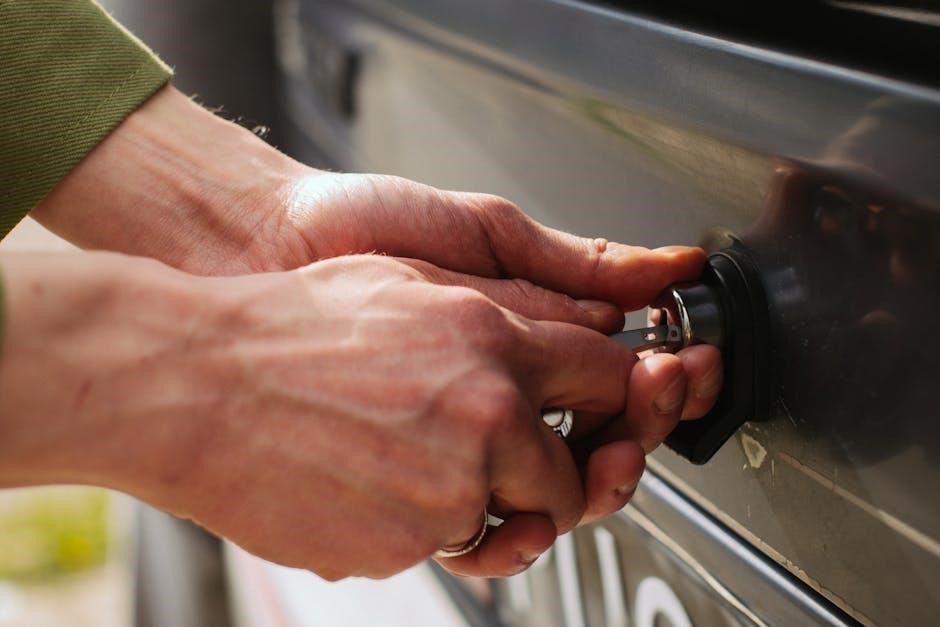
Safe Driving Practices
Safe driving practices are crucial for minimizing risks on the road․ Maintain a safe following distance, always wear a seatbelt, stay alert, and avoid distractions like texting while driving․ These habits help ensure the safety of everyone on the road․
4․1 Defensive Driving Techniques
Defensive driving is a proactive approach to reducing the risk of accidents․ It involves anticipating the actions of other drivers and being prepared to react․ Key techniques include maintaining a safe following distance, staying alert to your surroundings, and avoiding distractions like texting or eating while driving․ Always be aware of your mirrors and check blind spots regularly․ Controlling your speed, especially in adverse weather conditions, is crucial․ Additionally, use turn signals consistently and avoid aggressive behaviors such as tailgating or weaving in and out of lanes․ By staying patient, courteous, and focused, you can significantly enhance your safety on the road․ These practices help you respond effectively to unexpected situations and minimize potential hazards․
4․2 Tips for New Drivers
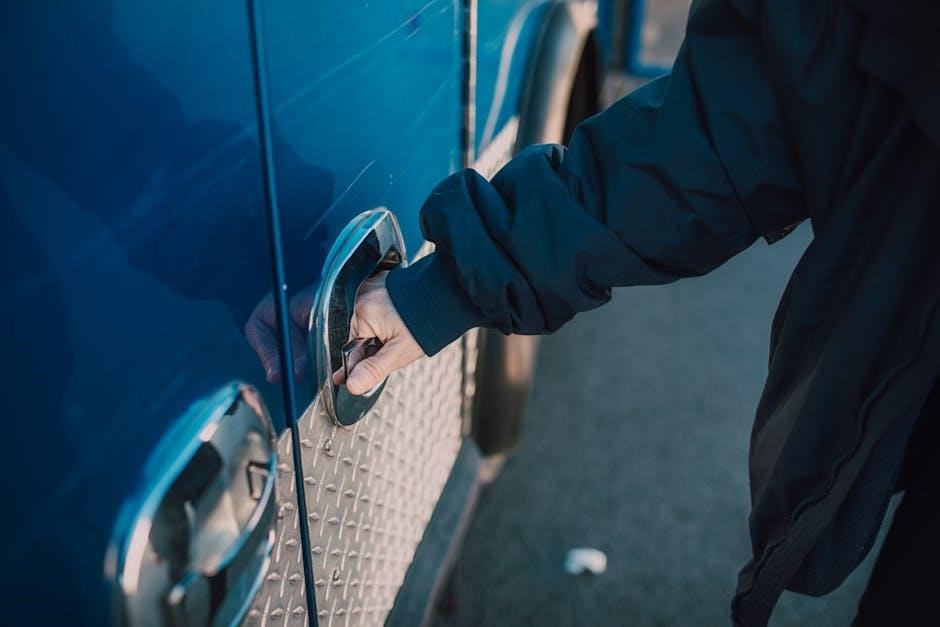
For new drivers, gaining experience and confidence behind the wheel is essential․ Start by practicing in low-traffic areas to familiarize yourself with vehicle controls․ Always adjust mirrors and seats for comfort and visibility before driving․ Maintain a safe speed, especially in school zones or construction areas, and use turn signals consistently․ Keep a safe following distance and avoid distractions like using a phone․ Stay calm and patient, especially in heavy traffic, and never tailgate․ Practice merging onto highways and navigate intersections with caution․ Avoid driving in extreme weather conditions until you gain more experience․ Lastly, always follow traffic laws and seek feedback from licensed drivers or instructors to improve your skills․ Consistent practice and attention to these tips will help you become a confident and competent driver․
4․3 Sharing the Road with Other Vehicles
Sharing the road with other vehicles requires respect, patience, and awareness․ Always yield to others when necessary and be cautious of larger vehicles like trucks and buses, which have blind spots and longer stopping distances․ When changing lanes, check mirrors and blind spots thoroughly, and signal your intentions to other drivers․ Never cut off other vehicles or pedestrians, as this can lead to accidents․ Be mindful of cyclists and motorcyclists, giving them plenty of space․ Additionally, always be prepared to stop for school buses and emergency vehicles when their lights are flashing․ By maintaining a safe distance and staying alert, you can reduce the risk of collisions and ensure a smoother flow of traffic for everyone․ Awareness and cooperation are key to sharing the road safely․
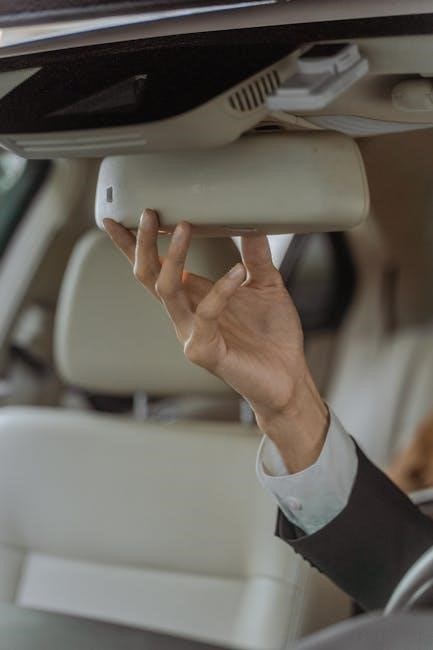
Road Test Preparation
The road test evaluates your ability to safely operate a vehicle and follow traffic laws․ Practice basic vehicle control and driving in various traffic conditions․ Review the Minnesota Driver Manual to ensure familiarity with state-specific rules and regulations․ Adequate preparation increases your chances of passing the test․
5․1 What to Expect During the Road Test
The road test evaluates your ability to safely operate a vehicle and follow traffic laws․ The examiner will assess your vehicle control, adherence to signs and signals, and driving etiquette․ You will be asked to perform basic maneuvers such as starting and stopping, turning, merging, and navigating intersections․ The test may include specific driving tasks like three-point turns or parallel parking․ Be prepared to demonstrate defensive driving techniques and awareness of other road users․ Stay calm and follow instructions carefully to ensure a smooth test․ Proper use of seatbelts and understanding of safety features is also essential․ Practice these skills beforehand to build confidence and improve your performance․
5․2 Common Mistakes to Avoid
During the road test, common mistakes include speeding, failure to check mirrors and blind spots, and not following traffic signals․ Many applicants also forget to signal lane changes or turn properly․ Rolling stops at stop signs, parking inaccuracies, and distracting behaviors are frequent errors․ Additionally, some drivers fail to yield the right-of-way or misjudge distances when merging․ To avoid these mistakes, stay attentive, follow examiner instructions, and practice maneuvers beforehand․ Nervous habits, such as abrupt acceleration or braking, can also negatively impact the results․ Focus on demonstrating safe and confident driving habits throughout the test․ Avoid distractions and maintain a calm demeanor to ensure a positive outcome․
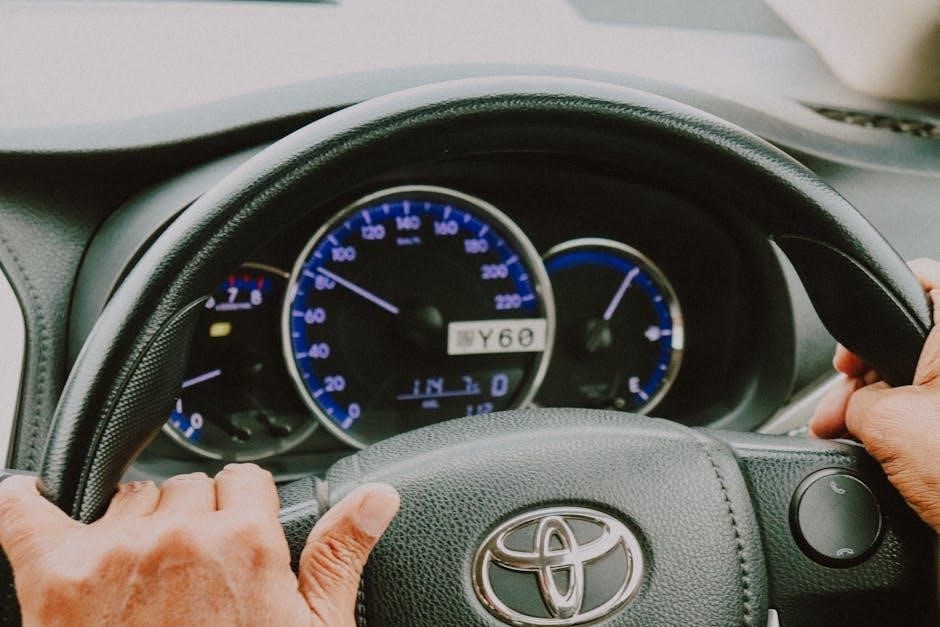
5․3 Tips for Success
To succeed in your road test, arrive early and ensure your vehicle is in good working condition․ Stay calm and follow the examiner’s instructions carefully․ Use reference points for parallel parking and three-point turns․ Always check mirrors and blind spots frequently, and signal every turn or lane change․ Maintain a steady speed and avoid sudden movements․ Familiarize yourself with common test routes and practice parking maneuvers beforehand․ Keep both hands on the wheel and avoid distractions․ Listen attentively to feedback and correct any mistakes promptly․ Confidence and attentiveness are key to demonstrating your driving skills effectively․ By practicing consistently and staying focused, you’ll be well-prepared for a successful road test experience․
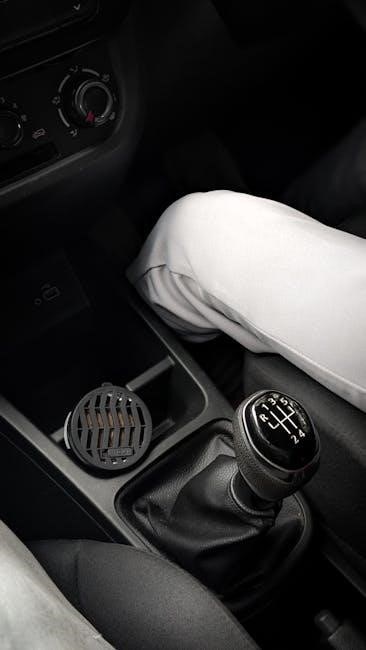
Obtaining Your Driver’s License
After passing the road test, submitting your application and paying the required fees will allow you to officially obtain your Minnesota driver’s license․
6․1 The Application Process
To apply for your Minnesota driver’s license, visit a Driver and Vehicle Services (DVS) office․ Bring required documents, complete the application form, and pay the fee․ Ensure all information is accurate․ Processing typically takes a few weeks, after which your license will be mailed․ Check document requirements in advance to avoid delays․ This step is crucial for obtaining your license efficiently․
6․2 Fees and Payment Methods
The cost of a Minnesota driver’s license varies based on age and license type․ Standard fees apply for new licenses, renewals, and duplicates․ Accepted payment methods include cash, credit cards, and checks․ Ensure you verify the exact fee amount on the Minnesota DVS website or at your local office․ Additional fees may apply for expedited services or specialty licenses․ Payment must be made at the time of application․ For accurate and up-to-date information, visit the official Minnesota Driver and Vehicle Services website or contact your local office directly․

Driving Under the Influence (DUI) Laws
Driving under the influence (DUI) laws in Minnesota are strict and enforced to ensure road safety․ Understanding these laws is crucial for all drivers․
7․1 Blood Alcohol Content (BAC) Limits
In Minnesota, the legal blood alcohol content (BAC) limit is 0․08% for drivers aged 21 and older․ For drivers under 21, Minnesota has a zero-tolerance policy, meaning any detectable BAC is illegal․ Commercial drivers must adhere to a stricter limit of 0․04%․ Understanding these limits is crucial to avoid DUI charges and ensure road safety․ Drivers should never operate a vehicle after consuming alcohol, as even small amounts can impair judgment and reaction times․ Always plan for a sober ride, whether through a designated driver, public transportation, or ride-sharing services; Ignoring BAC limits puts lives at risk and carries severe legal consequences․
7․2 Consequences of a DUI Offense
A DUI conviction in Minnesota carries severe penalties․ First-time offenders face fines up to $1,000, a 90-day license suspension, and potential jail time․ Repeat offenses result in harsher penalties, including longer license revocations, increased fines, and mandatory ignition interlock devices․ A DUI conviction remains on your record for up to 15 years, impacting insurance rates and employment opportunities․ Additionally, drivers may be required to complete alcohol assessment and rehabilitation programs․ Underage drivers face enhanced penalties, including extended license suspension and community service․ A DUI offense also puts others at risk, causing emotional and financial strain on families․ Minnesota enforces these consequences to deter impaired driving and protect public safety․ Always prioritize responsible driving to avoid these serious repercussions․
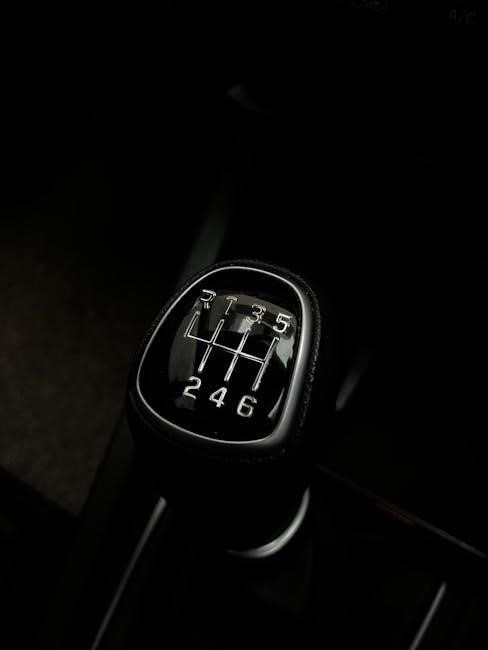
Glossary of Important Terms
This section provides a bilingual glossary of key driving terms in English and Spanish, covering essential traffic signs, road rules, and legal terminology to aid comprehension for Spanish-speaking drivers․
8․1 English-Spanish Dictionary of Driving Terms
This section offers a comprehensive list of essential driving terms translated from English to Spanish․ It includes common phrases like “traffic light” (semáforo), “speed limit” (límite de velocidad), and “right-of-way” (derecho de paso)․ Additionally, it covers specific legal terms such as “driver’s license” (licencia de conducir) and “vehicle registration” (registro del vehículo)․ The dictionary ensures that Spanish-speaking drivers can understand critical driving vocabulary, making it easier to study and apply the information in the manual․ By providing clear translations, this resource helps learners grasp complex terms quickly and effectively, promoting safer and more informed driving practices in Minnesota․
8․2 Common Phrases Used in the Manual
This section highlights frequently used phrases in the Minnesota Driver Manual in Spanish․ These phrases are essential for understanding key concepts and instructions․ Examples include:
- “Come to a complete stop” (Deténgase por completo)
- “Merge into traffic” (Incorpórese al tráfico)
- “Yield to oncoming traffic” (Ceda el paso a los vehículos en sentido contrario)
- “Do not enter” (No entre)
- “Right lane ends” (El carril derecho termina)
These phrases are critical for safe driving and are repeated throughout the manual to emphasize important safety measures and legal requirements; By familiarizing yourself with these terms, you can better navigate Minnesota roads and adhere to traffic laws․
Resources for Spanish-Speaking Drivers
Spanish-speaking drivers in Minnesota can access the Minnesota Driver Manual in Spanish online․ Additional resources include practice tests, community centers, and Spanish-language driving courses․
9․1 Where to Find the Spanish Driver Manual
The Minnesota Driver Manual in Spanish is available online through the Minnesota Department of Public Safety (DPS) website․ It can be downloaded as a PDF or viewed directly online․ Additionally, hard copies of the Spanish manual can be obtained at local Driver and Vehicle Services (DVS) exam stations across the state․ To find a nearby exam station, visit the DPS website and use their location tool․ Spanish-speaking drivers can also check with local community centers or libraries, as they often provide free access to the manual․ This ensures all drivers have equal access to essential information for safe and legal driving in Minnesota․
9․2 Additional Study Materials and Practice Tests
Besides the Spanish Driver Manual, Minnesota offers several additional resources to help drivers prepare for the written and road tests․ The Minnesota Department of Public Safety (DPS) provides free online practice tests in Spanish, covering traffic laws, signs, and safe driving practices․ These tests are available on their official website and are designed to simulate the actual exam format․ Additionally, third-party websites and mobile apps offer interactive study guides, quizzes, and flashcards tailored for Spanish-speaking learners․ Many libraries and community centers also provide access to study materials, including Spanish-language driving handbooks and practice tests․ These resources are invaluable for reinforcing knowledge and building confidence before taking the official driver’s exam․
9․3 Community Resources and Support
Minnesota offers a variety of community resources and support services to assist Spanish-speaking drivers in preparing for their driver’s license․ Local non-profit organizations, libraries, and community centers often provide free or low-cost workshops and study groups focused on driving laws and safe practices․ Many churches and cultural centers also offer bilingual support, connecting drivers with resources and instructors who speak Spanish․ Additionally, online forums and social media groups dedicated to Spanish-speaking drivers in Minnesota can be a valuable source of advice and encouragement․ These community-based initiatives help ensure that all drivers, regardless of language barriers, have the tools and support needed to succeed․
Thank you for utilizing the Minnesota Driver Manual in Spanish․ This guide has provided a comprehensive overview of driving laws, safe practices, and licensing procedures in Minnesota․ By understanding the content, Spanish-speaking drivers can navigate the roads confidently and responsibly․ Remember, safe driving is a shared responsibility that requires adherence to traffic laws and respect for all road users․ Avoiding dangerous behaviors, such as driving under the influence, is crucial to protecting yourself and others․ For new drivers, practice and patience are key to becoming a skilled and defensive driver․ Take advantage of community resources and study materials to reinforce your knowledge․ Safe driving is a lifelong commitment—stay informed, stay alert, and enjoy the freedom of the road!
Leave a Reply
You must be logged in to post a comment.